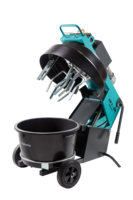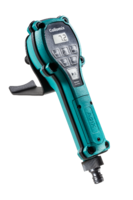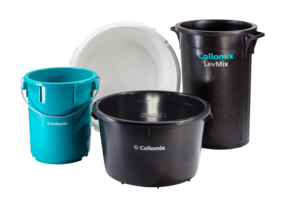
A practical use case for Concrete Repair
Content:
- Mortar systems used
- Crucial aspects of mixing technology in concrete repair:
- Concrete repair with flowable repair mortar and XM forced-action mixer in operation
Concrete Repair with Cementous Flowable Repair Mortar
State-of-the-art, forced-action mixing technology has a decisive influence on processing quality
Many concrete buildings from the 1950s to 1970s are acute repair cases, especially in the transport sector. Age-related spalling or corrosion damage to the reinforcement can seriously impact the statics of the component.
In addition to civil engineering projects, balconies, staircases or parking areas made of concrete are particularly affected by these types of damage. Extensive repair work on these structures is usually accompanied by high financial expenditure and requires special expertise and careful execution from the planners and companies involved. In-depth knowledge and experience is also required of the craftsmen carrying out the work in order to ensure it is carried out professionally.
Mortar systems used
A decisive factor in the execution of the repair work is the choice of mortar system to be used. Plastic-modified cement mortars, so-called PCC mortars, are often used. Other mortar systems are reaction resin mortars based on epoxy resins mixed with quartz sand. These special mortars are offered by the construction chemicals industry as dry ready-mixes and usually have to be mixed with water. A crucial factor is to thoroughly mix the precisely measured amount of water with the dry substance.
Forced-action mixers are suitable solutions for constant material quality
Since many applications require larger quantities of material, the use of a forced-action mixer is recommended. Machines with exchangeable mixing buckets, such as the Collomatic XM 2/XM 3 from Collomix, offer decisive advantages for a rapid supply of fresh mortar to the construction site. In many cases, repair mortars have short working times and set quickly. For this reason, it is important to apply the mortar fresh on fresh so that no joints or edges can occur in the surface that is already hardening. With the Collomatic mixer, even smaller quantities of material can be mixed, delivered in short cycles and processed quickly.
Crucial aspects of mixing technology in concrete repair:
Homogeneous mixture: A forced-action mixer with several mixing elements ensures rapid disintegration of the powder material and uniform distribution of the various mortar components. An edge scraper counteracts the deposition of material on the edge. Both result in a homogeneous mixture with optimum mortar quality in a short time. Even heavy masses can still be mixed due to the high torque of the mixing tools.
Consistent quality: With the Collomix XM forced-action mixer, a timer ensures consistent mixing times and thus a consistent quality of each individual mix.
Time saving: Collomix forced-action mixers work very efficiently and can speed up the mixing process. This leads to savings on time and labour costs and significantly shortens processing times. Interchangeable mixing buckets enable a high throughput and continuous, uninterrupted delivery of freshly mixed material.
Versatility: Collomix forced-action mixers can be used for different viscosities of mortars or slurries by changing the mixing tools, as the different equipment changes the mixing speed. This increases their versatility and their possible applications in different construction projects.
Safety at work: As the mixing process of Collomix forced-action mixers is automated, users no longer need to carry out manual mixing work. This saves energy and is easy on the muscles. In the meantime, the staff can devote themselves to other tasks.
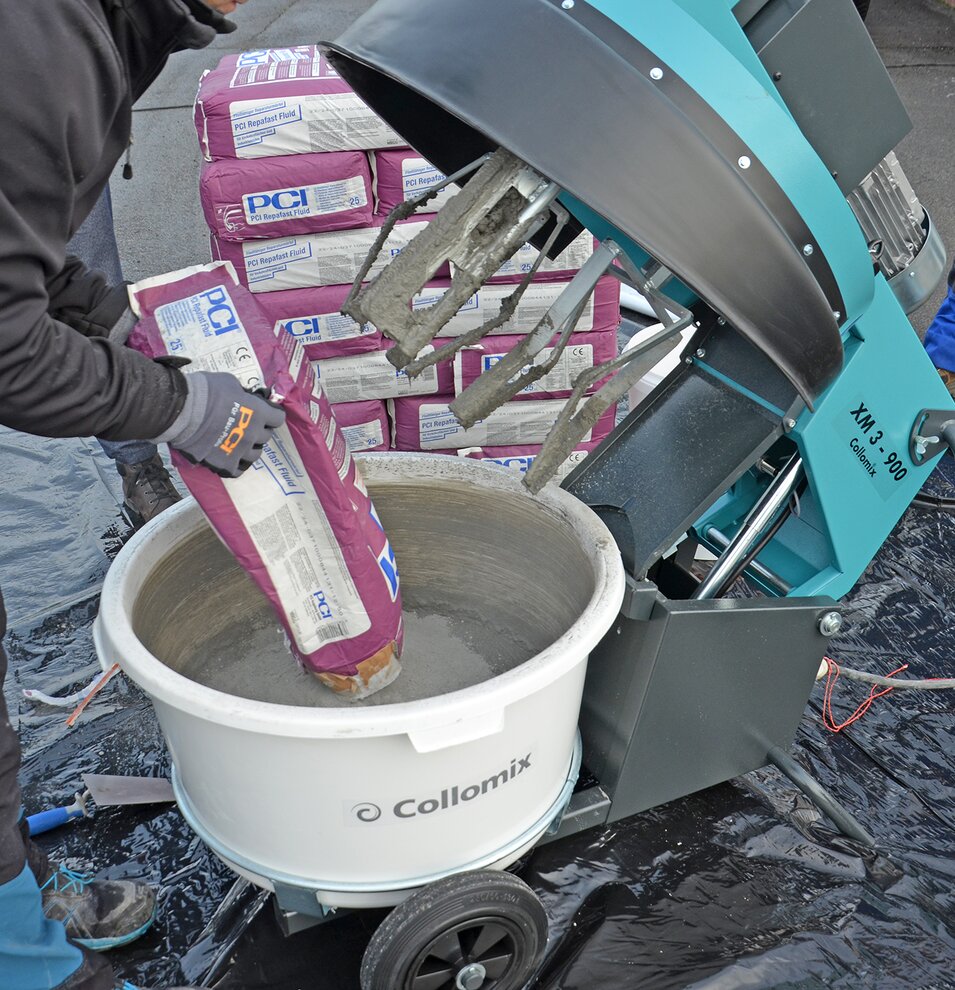
Filling of the Collomatic XM 3-900
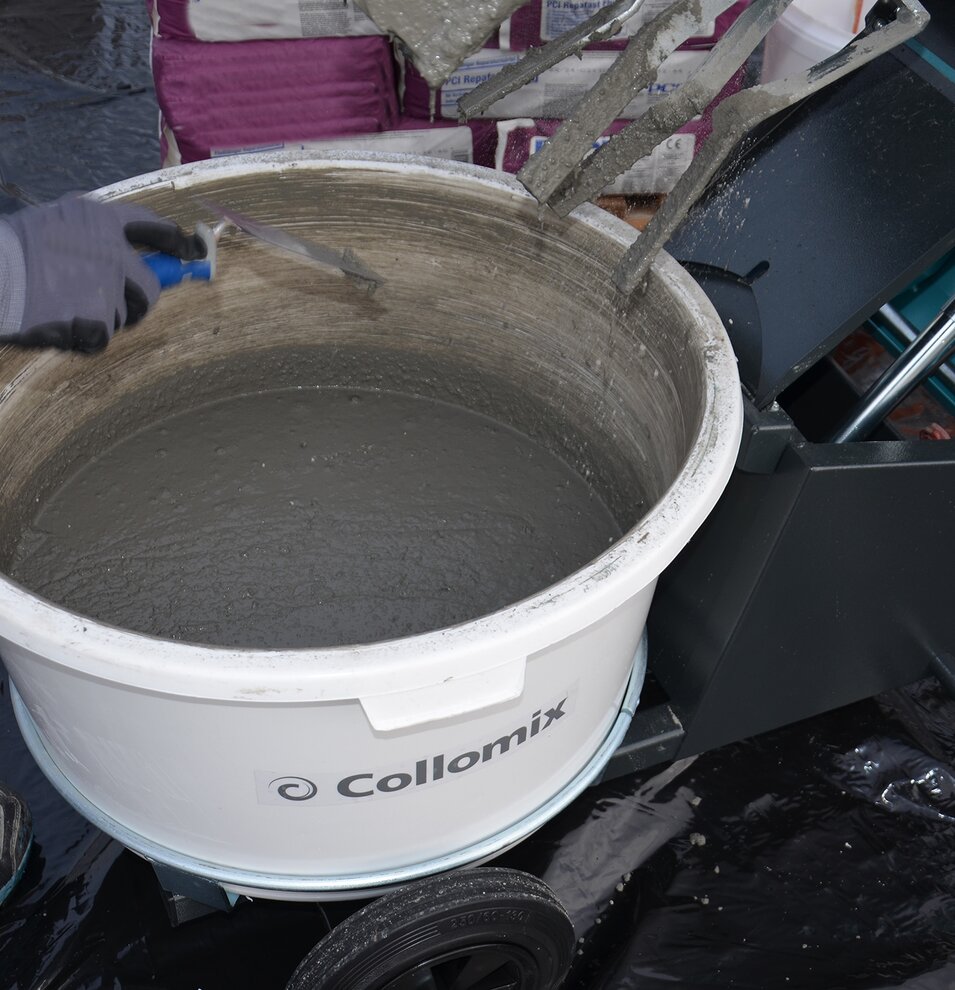
Ready mixed mortar
A pracital use case: Concrete repair with flowable repair mortar and XM forced-action mixer in operation
Around four tons of Repafast flowable repair mortar from PCI, Germany were mixed on a construction site with a Collomatic XM 3 forced-action mixer in just under 3.5 hours for the repair of an outdoor concrete surface. PCI Repafast fluid is a special cementitious and fast-setting mortar that hardens within 20 to 30 minutes. This makes it possible to complete repair work in a short time and quickly put the repaired area back into operation.
The contractor decided to use this material because the surface needed to be used again the same day. It was important that the supply of fresh material was not allowed to break off during spreading in order to achieve an even distribution over the area. Two bags of dry material (50 kg) were mixed with the necessary addition of water per mixing process. The two mixing tools of the Collomix XM-3 homogenised the mixture in around 90 seconds. With the help of the transport truck, the mixing container was lifted out of the machine, taken to the processing site and poured there. In the meantime, the next batch was already being mixed. The mixing process was controlled by means of the automatic timer on the mixer.
With this self-levelling mortar, strict adherence to the addition of water was crucial. Because with such well-balanced material mixtures, the effects of just 0.2 litres of water more or less in the processing are immediately noticeable. With the help of the Collomix AQiX water metering unit, the processors were on the safe side when it came to the water quantity and were able to realise a constant mixing result on the construction site.

